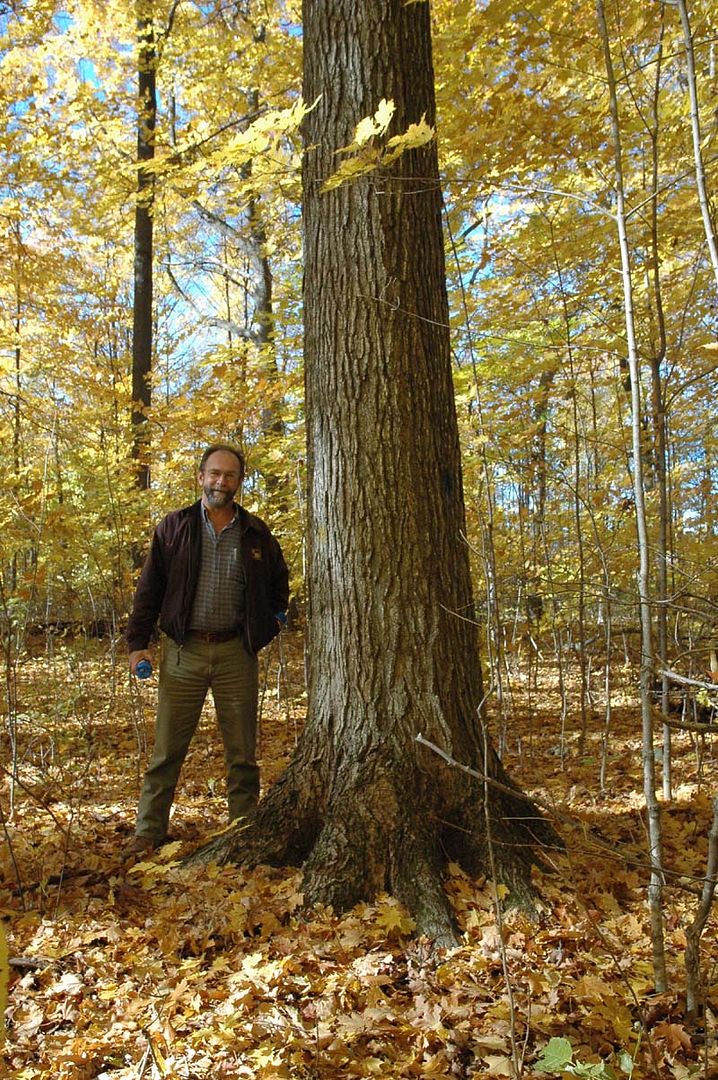That leaner looks like trouble to me. I'de be more worried about cutting it out of the Rock Maple, than running away after initiating the big sugar to fall. Maybe it would roll out, probably not, and if it didn't it might do any number of wacky things; it could roll a little left and push backwards, causing that compression fracture to hinge outward and then down, somewhere??? fast. or maybe the comp fracture twists inward as the top slides down, the comp fracture might end up by the base of the sugar, with the dead top now vertical and unattatched, it would probably fall back towards its own stump in an attempp to swat the faller. and if the fracture isn't weak enough to bend it might just hang there, problem with that is when you cut the money maple the leaner may become dislodged and fall faster than you can run, or it might fall hard enough to throw a dead branch which will given murphy's laws smack the faller right in the head, either one. Where as if you havn't cut its base off, and it becomes dislodged, it will probably fall somewhat slower.
By leaving it up there you minimize the bad options (things will happen with more energy and be erratic) and maximise the better options (the event will have less energy and there will be fewer possible end results). Also its quicker to leave it up there, and less time spent in the danger zone ussually equates to less exposure.
Its interesting that your first reaction, to fall the money tree with the leaner intact, was the most efficient and safest. Pretty good illustration of why second guessing ourselves is dangerous.
"Hesitate and Die." Mike Molineux (Mike and i went through "a" school in great lakes together, he lives up by John somewhere.)
Anyway, Gypo living through crap like that on a regular basis, has probably developed a pretty strong survival instinct. Maybe there is something here worth paying attention to. Sometimes it seems that the hard core "safety via procedure and PPE" oriented folks often get flustered when anyone talks about "instinct" being a factor. But the little voices in my head have kept me out of a fair ammount of trouble, and gaurdian angels have also helped. Maybe because i follow a "procedure", but sometimes i wonder if it may be something else. As for PPE, my hard hat mostly prevents the minor dents and dings, it may have saved my life once, i guess thats enough reson to where one, chaps to.
John, how come you keep living through situations like that one?










